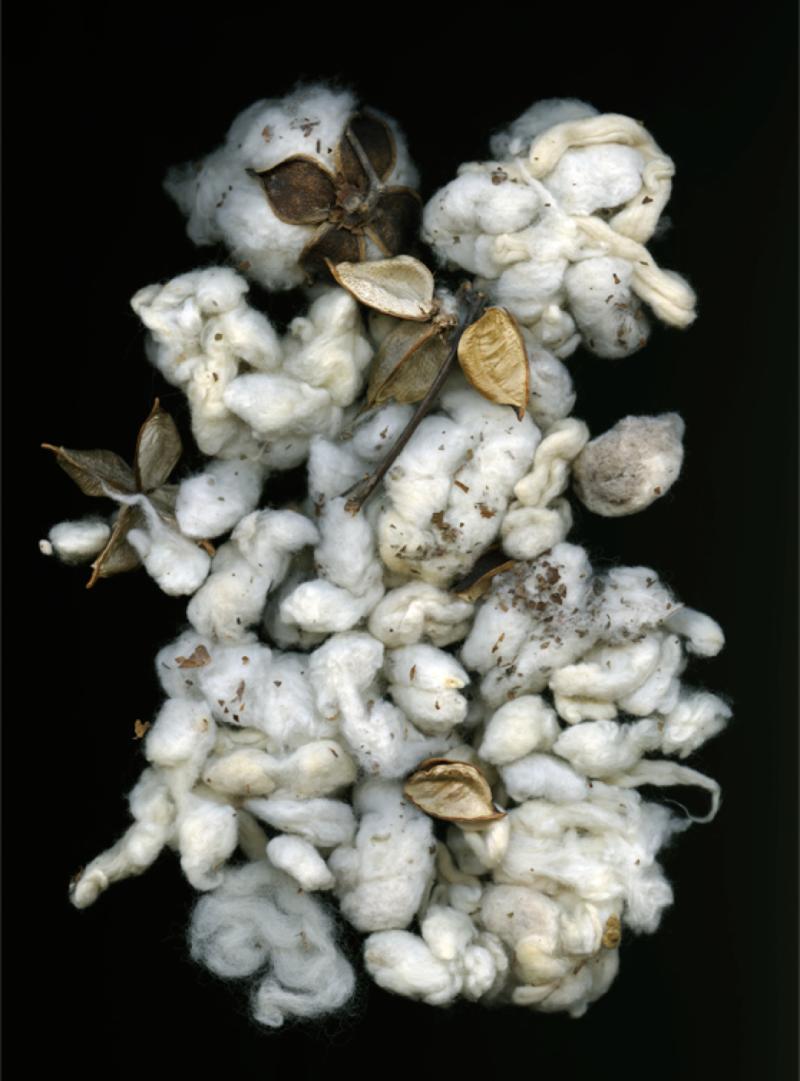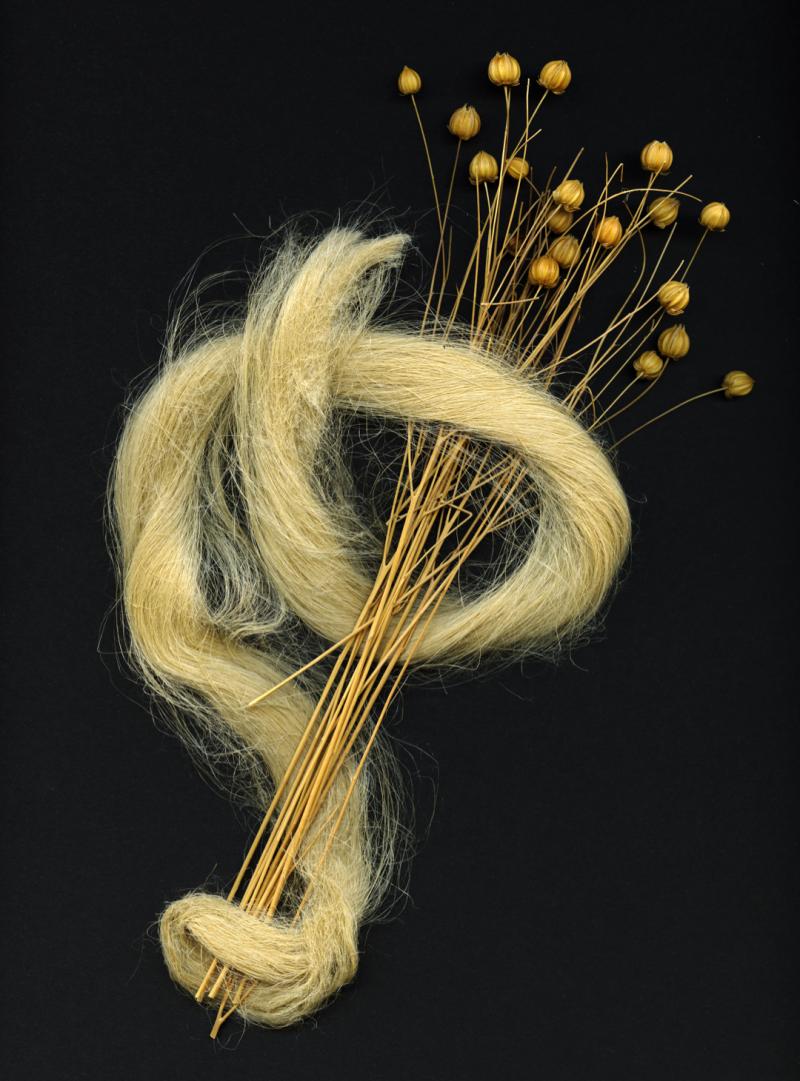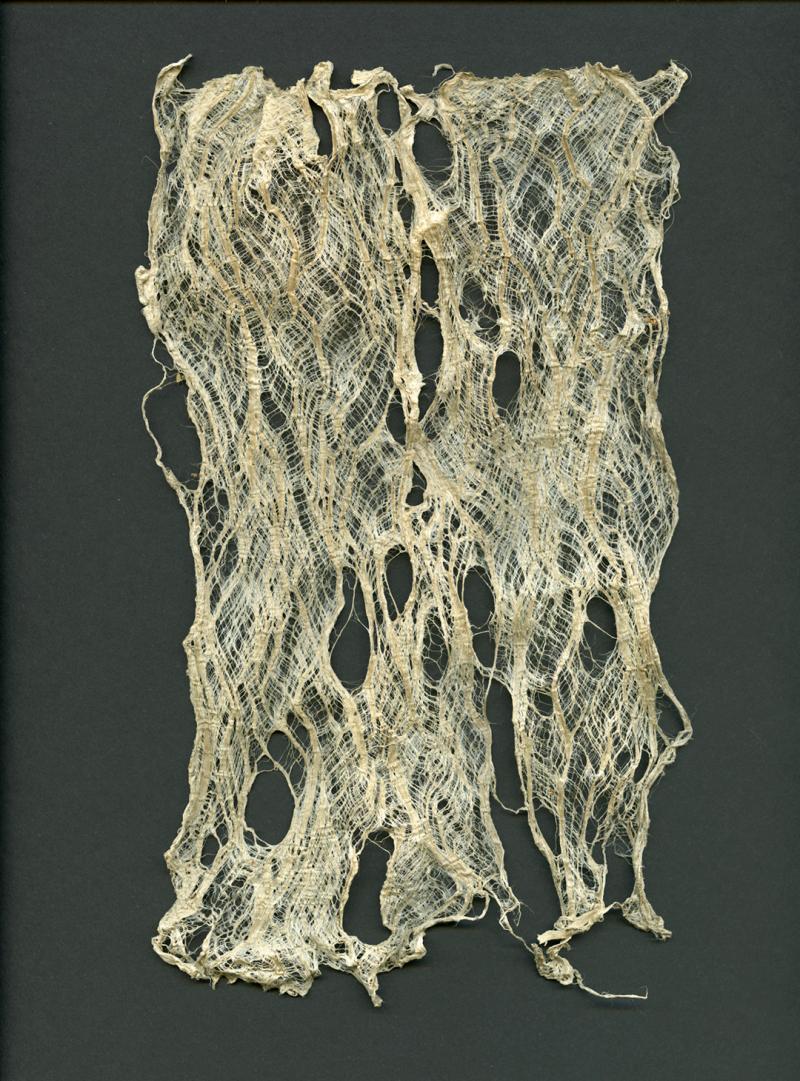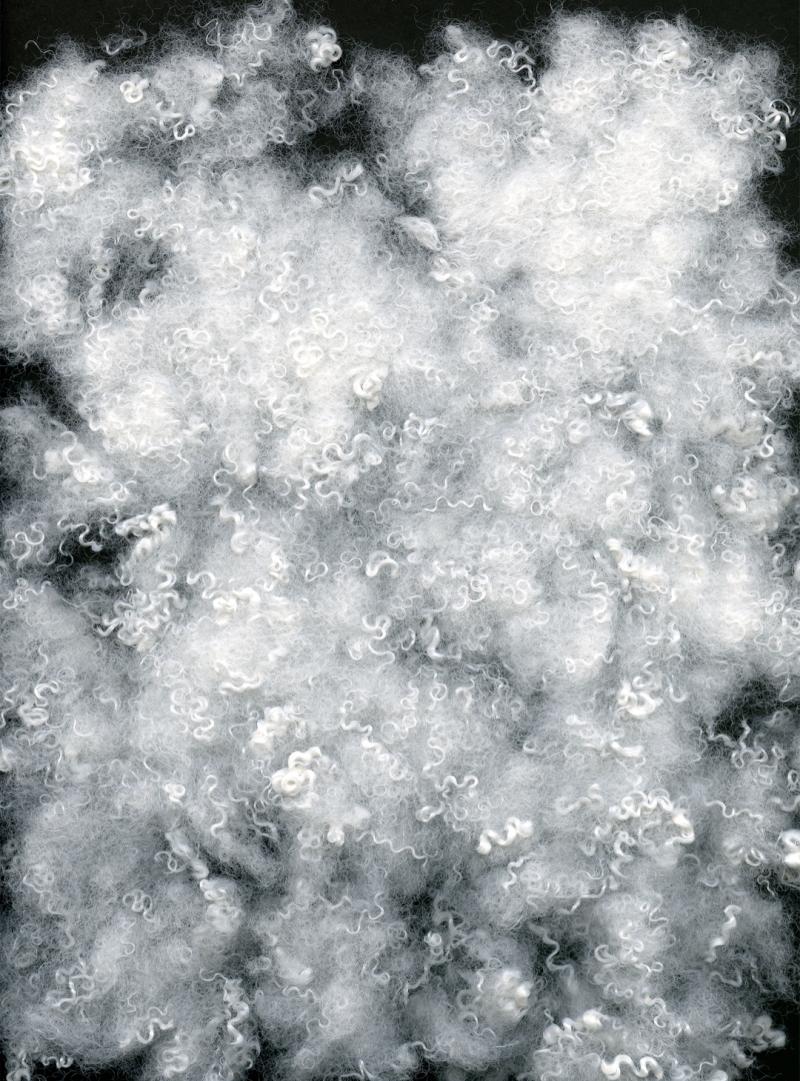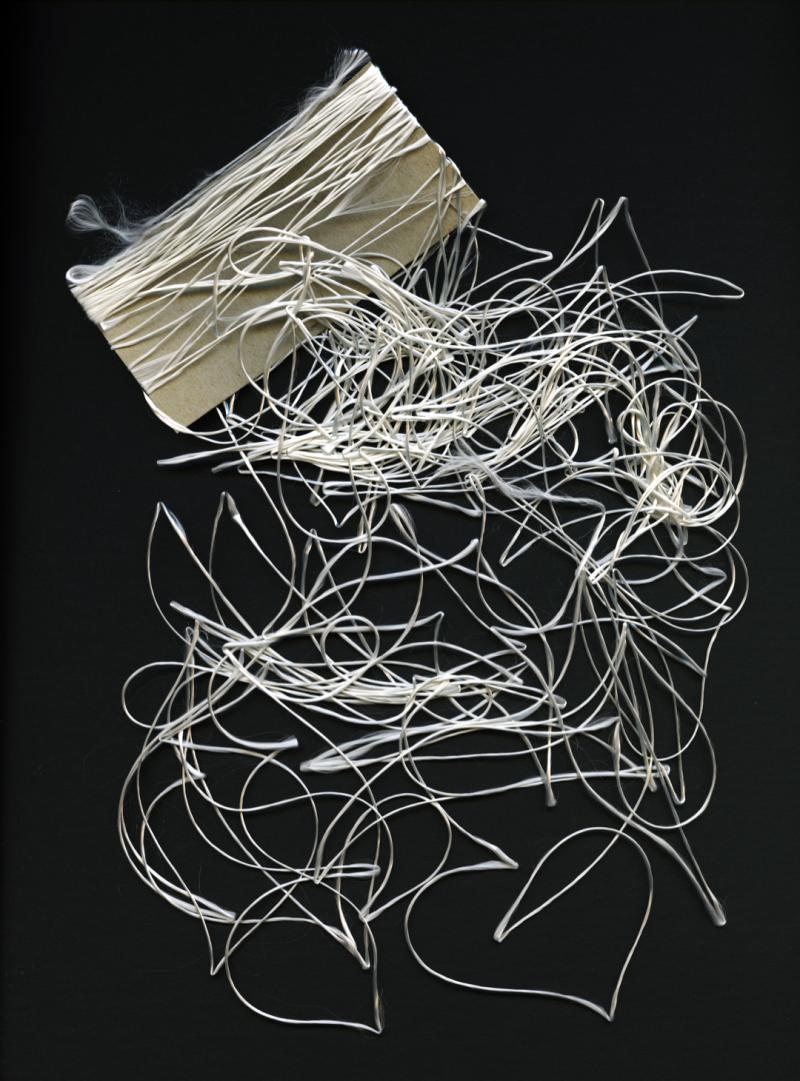Fiber
Since prehistoric times, people have identified the most suitable fibers from local plants, animals, and other sources to make textiles that are soft, warm, and useful. Textile fibers must be flexible and strong, thin and long, and cohesive. Learn about cotton, linen, silk, wool, and other fibers used by people around the world.
Cotton
Cotton is a soft and breathable plant fiber that has been cultivated for nearly 8,000 years, since the Indus Valley civilizations. After the plant flowers, its seeds grow tiny fibers that expand inside the seedpod (boll) until it bursts. Harvesters remove the pod's hull and seeds to obtain the soft puffs of cotton for spinning into yarn. Cotton is a common household fiber because it is comfortable to touch, has low static, and can withstand repeated washing and drying.
Why choose cotton?
- Absorbent
- Strong when wet
- Abundant supply
- Soft to touch
- Keeps you cool
Drawbacks:
- Wrinkles
- Swells in water (fabric shrinks)
- Mildews
- Does not easily take dye
Linen
Linen, from the flax plant, is one of the oldest and most prized natural fibers. It requires a lot of attention during its cultivation because the usable fiber is embedded between the outer bark and the core of the plant's stem. Harvesters extract the linen by letting the outer bark rot and dry. Then they break away the decayed bark to obtain the fibers inside. Linen is difficult to work with (the fiber is not elastic and breaks easily), but is highly valued for its considerable strength, its ability to wick moisture, and its elegant appearance.
Why choose linen?
- Absorbent
- Strong when dry and wet
- Wicks moisture
- Smooth
- Lustrous
- Keeps you cool
Drawbacks:
- Wrinkles
- Limited supply
- Mildews
Silk
Silk is the filament excreted by a silkworm when it makes its cocoon. An average cocoon contains one continuous strand of raw silk that is nearly 1,000 yards long. People in ancient China discovered that silk cocoons could be unraveled in hot water to release their long, fine thread, and that several strands of thread could be reeled together to make a strong yarn of soft, shiny silk. You need silk from more than 100 cocoons to make a necktie, and nearly 650 to make a blouse. The intense labor that goes into silk production contributes to its high cost as a luxury fabric.
Why choose silk?
- Absorbent
- Lustrous and smooth
- Soft and dry to touch
- Drapes well
- Strong
- Good elastic recovery
- Takes dye easily
Drawbacks:
- Weakened by light and perspiration
- Limited supply
- Eaten by insects
Wool
Wool is one the oldest fibers in human history and likely helped people survive in cold and rigorous climates. Wool grows on a sheep's body as dense, tightly crimped hairs that grow back after shearing. For millennia, nomadic people kept herds of sheep with them as a renewable source of fiber. Wool comes from many kinds of sheep and varies widely in length, luster, and coarseness. Its scaly surface texture allows fibers to bind to one another. This is useful for spinning wool into yarn or felting and molding it into shapes.
Why choose wool?
- Absorbent
- Soft and warm
- Dry to touch
- Moldable
- Elastic recovery
- Resists abrasion
- Renewable (grows back)
Drawbacks:
- Weaker when wet
- Heavy when wet
- Eaten by insects
- Can irritate skin
Bark
Bark cloth is made by beating together wet strips from the inner bark of trees, most commonly the mulberry tree. Sometimes bark cloth is called paper cloth, since paper is also made by fusing tree fibers together into a sheet. This type of fiber was traditionally used in island communities where the environments did not support extensive agriculture or animal husbandry. Bark is one of the rare fibers that is not spun into yarn before it is made into a fabric.
Why choose bark?
- Moldable
- Renewable
Drawbacks:
- Provides little warmth
- Mildews
- Loses strength when wet
Polyester
Polyester is a fiber made when melted plastic is pushed through a tiny hole to create a long, smooth filament. Polyester became popular in the 1970s because of its incredible resistance to repeated use and washing. You can also mold polyester and set it with heat to create permanent pleats or folds. Today, polyester is the most widely used synthetic fiber, often blended with natural fibers like cotton to help absorb and wick water.
Why choose polyester?
- Strong and resilient to abrasion
- Moldable into permanent pleats or folds
Drawbacks:
- Collects static and oily stains
- Low perspiration absorbency
- Stubborn pilling
- Not biodegradable
Rayon
Although rayon is created in a laboratory, it is made from natural materials. Rayon is reconstituted cellulose, usually wood pulp. Developed in the 19th century as a substitute for silk, rayon mimics its soft and shiny qualities without the intensive labor and production costs.
Why choose rayon?
- Absorbent
- Economical to produce
Drawbacks:
- Wrinkles
- Swells in water
- Mildews
- Loses some strength when wet



